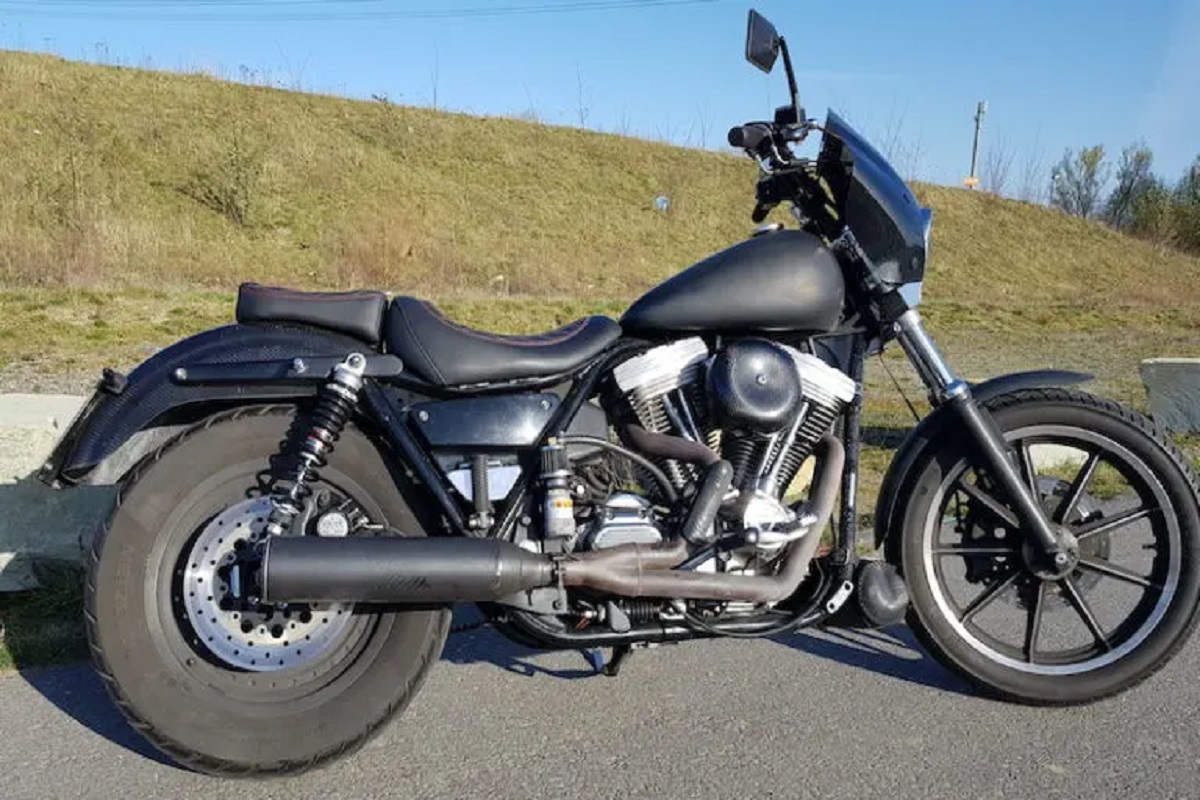The Harley FXR motorcycles, released in the early eighties, were different from traditional Harleys and divided opinions. Now, they are highly regarded by fans as exceptional bikes from Harley-Davidson.

The first FXR came out in 1982, with a brief revival in 1999. Despite being criticized as too “Japanese” initially, these qualities are now valued in a big V-twin motorcycle.
Back then, Japanese brands like Honda and Yamaha dominated the market with fast, reliable bikes. Harley needed to compete by creating a bike that would attract buyers from these brands.To improve sales, Harley had to enter the sports market, focusing on performance and incorporating qualities from both Harleys and sportier Japanese bikes.
Although Harley was already working on the FLT, they used its drivetrain and designed a new frame for the FXR instead. Steve Pertsch led the FXR’s design team, with input from Eric Buell, a road racer. Buell’s racing experience influenced the bike’s design, aiming to blend Harley’s traditional look with sporty features.
The first FXR models were introduced in 1981 for the 1982 model year. These included the FXR Super Glide II and the FXRS. Before the FXR, Harley-Davidson bikes were known for strong vibrations and a cruiser stance. The challenge was to combine Harley’s appearance with sporty performance, which required reducing vibrations for better handling.
The FXR’s chassis was crucial for achieving the desired performance. Its steel double cradle frame provided stability and good lean angles. Stamped-steel parts were used to reduce weight, and the rear shock’s position balanced the bike. The FXR’s chassis accommodated an innovative design, offering better ground clearance while maintaining Harley’s signature style.
The bike’s seat height allowed accessibility and retained the traditional Harley stance. Front forks, steering head, rear Showa shocks, and triple disc brakes contributed to its impressive handling.
The FXR’s distinguishing feature was the rubber-mounted engine, which minimized vibrations. The engine was borrowed from the FLT and later transitioned to the Evolution engine. The isolastic engine mounting system, similar to Norton motorcycles, further reduced vibrations. Chain final drive was later replaced by belt drive, and the five-speed transmission enabled smoother highway cruising.
The FXR’s construction required attention to detail, resulting in hand-assembled frames. The FXR2 and FXR3 models were later revived under Harley’s Custom Vehicle Operations (CVO) program, offering chrome upgrades and unique accessories.
The FXR’s success can be attributed to its engineers’ commitment to merging Harley’s tradition with modern performance. However, the FXR’s smoothness, similar to Japanese bikes, disappointed some traditionalists, affecting sales.
Despite this, the FXR platform remains one of Harley-Davidson’s most outstanding achievements, pushing boundaries and creating a competitive sports-based cruiser. Today, the FXR’s legacy endures. It attracts riders seeking a blend of craftsmanship, performance, and uniqueness, solidifying its place as a remarkable motorcycle.
Leave a Reply